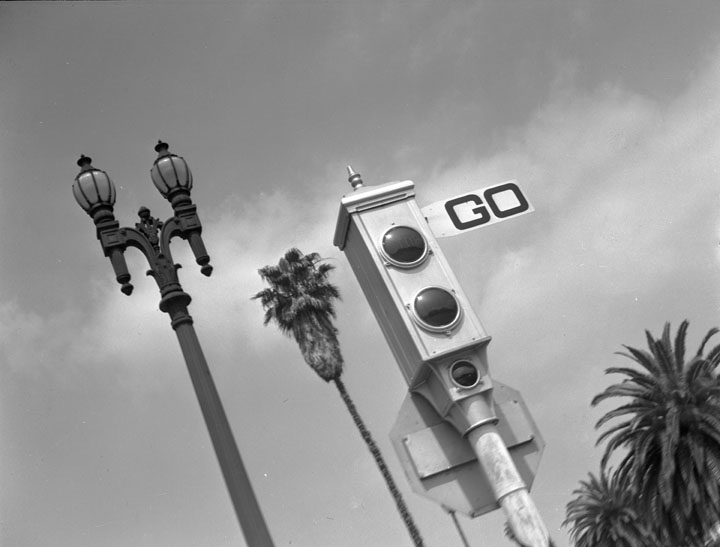 Posted Oct 14, 2014, 3:41 PM
Posted Oct 14, 2014, 3:41 PM
|
|
Registered User
|
|
Join Date: Aug 2013
Posts: 219
|
|
Quote:
Originally Posted by FredH

|
This is a circa 1937 version of the same type of traffic signal. I've been trying to find the maker to no avail, but suspect it might have been Acme. Of curiosity is the smaller lens below the larger upper lenses in both cases.

Historical_DWP_Photo_Collection_LA_Public_Library
More about the ACME traffic signal:
Image is of a restored and working 1924 signal

Quote:
The Acme Traffic Signal was unique among all traffic signals. It sported not only illuminated red and green Corning glass lenses with heat-resistant ‘stop’ and ‘go’ letters, but also innovative stop-and-go semaphore arms and an amber blinking light for the wee hours of the morning when traffic was mostly absent. It even had a bell to warn of the changing of the lights and arms (although the bells were disconnected in 1931, as the clanging of four signals at an intersection was described by some as sounding like New Year’s Eve in a boiler factory).
Sadly, Acme’s success was short lived, as the signals literally were going to the birds. Despite a bird spike atop the signals, malfunctions became a frequent problem due to bird nests being built inside the hollow area where the semaphore arms came to rest for 14 hours a day, from twilight to daybreak.
- See more at: http://www.antiquetrader.com/article....NX780IDv.dpuf
|
From: http://www.antiquetrader.com/article...al_restoration
Last edited by Retired_in_Texas; Oct 14, 2014 at 4:26 PM.
Reason: New data added
|